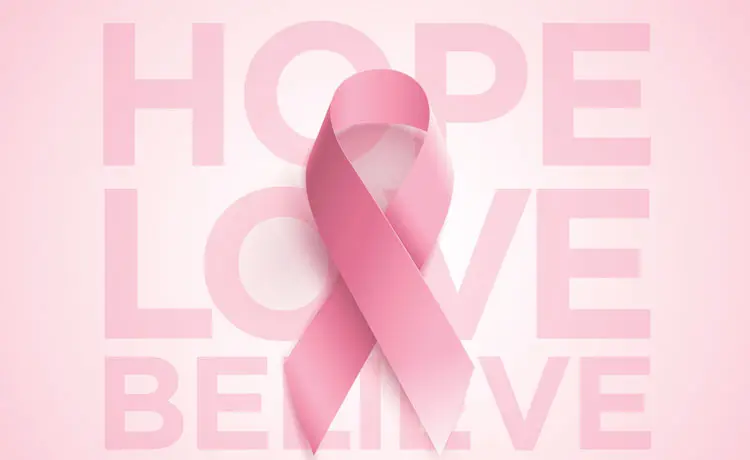October is Breast Cancer Awareness month – the perfect time to wear a pink ribbon and spread the word about the steps women can take to detect breast cancer. First, some facts:
- Both women and men can get breast cancer, though it is much more common in women.
- Other than skin cancer, breast cancer is the most common cancer among women in the U.S.
- One in eight women will be diagnosed with breast cancer in her lifetime.
- Breast cancer is less common in younger women than in older women, but young women are more likely to have hereditary breast cancer.
Do You Know the Breast Cancer Warning Signs?
Different people have different symptoms – while some do not have any signs at all. Some warning signs include the following:- New lump in the breast or underarm (armpit)
- Thickening or swelling of part of the breast
- Irritation or dimpling of breast skin
- Redness or flaky skin in the nipple area or the breast
- Pulling in of the nipple or pain in the nipple area
- Nipple discharge other than breast milk, including blood
- Any change in the size or the shape of the breast
- Pain in any area of the breast
QuickTip: Mammograms (an x-ray of the breast) are the best way to find breast cancer early, when it is easier to treat and before it is big enough to feel or cause symptoms. The United States Preventive Services Task Force (USPSTF) recommends that average-risk women age 50 to 74 have a screening mammogram every two years.
Breast Cancer in Young Women Can Be Hereditary – Caused by an Inherited Change in Your BRCA Genes
Everyone has Breast Cancer (BRCA) genes. You have two BRCA genes, one from each parent, which help your body prevent breast cancer. Some people have mutations – or changes in their BRCA genes, which increase their risk for breast, ovarian and other cancers. If one of your parents carries a BRCA gene mutation, you have a 50% chance of also having the mutation. Why is this important? 50% of women with a BRCA1 or BRCA2 gene mutation will develop breast cancer by the time they turn 70 years old, compared to 7% of women in the general U.S. population. #BringYourBrave is a CDC campaign to educate young women on the risk factors for breast cancer before age 45.QuickTip: While experts might not agree about the benefits of breast self-exams in finding breast cancer or saving lives, self-exams can help you get to know your breasts. Being familiar with how your breasts look and feel can help you notice symptoms such as lumps, pain or changes in size that may be of concern.
What Can You Do to Reduce Your Risk of Breast Cancer?
While you can’t change your age or family history, you can help lower your risk by taking care of your health:- Keep a healthy weight.
- Exercise regularly (at least four hours a week).
- Get a good night’s sleep. Research shows that lack of nighttime sleep can be a risk factor.
- Don’t drink alcohol, or limit alcoholic drinks to no more than one per day.
- Avoid exposure to chemicals that can cause cancer (carcinogens) and chemicals that interfere with the normal function of the body.
- Limit exposure to radiation from medical imaging tests such as x-rays, CT scans and PET scans if not medically necessary.
- If you are taking hormone replacement therapy or birth control pills, ask your doctor about the risks and find out if it is right for you.
- Breastfeed your children, if possible.
- If you have a family history of breast cancer or inherited changes in your BRCA1 and BRCA2 genes, you may be at high risk. Talk to your doctor about more ways to lower your risk.
